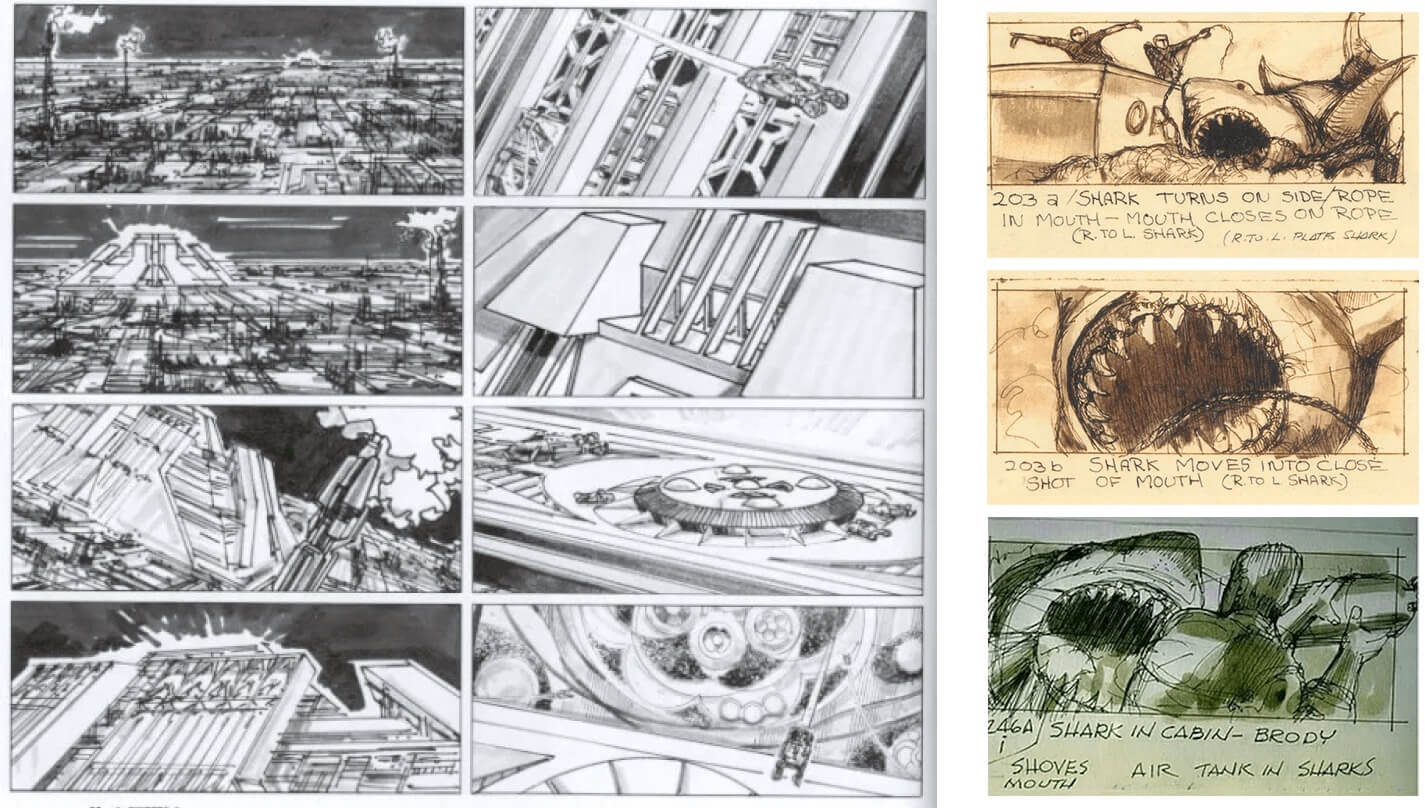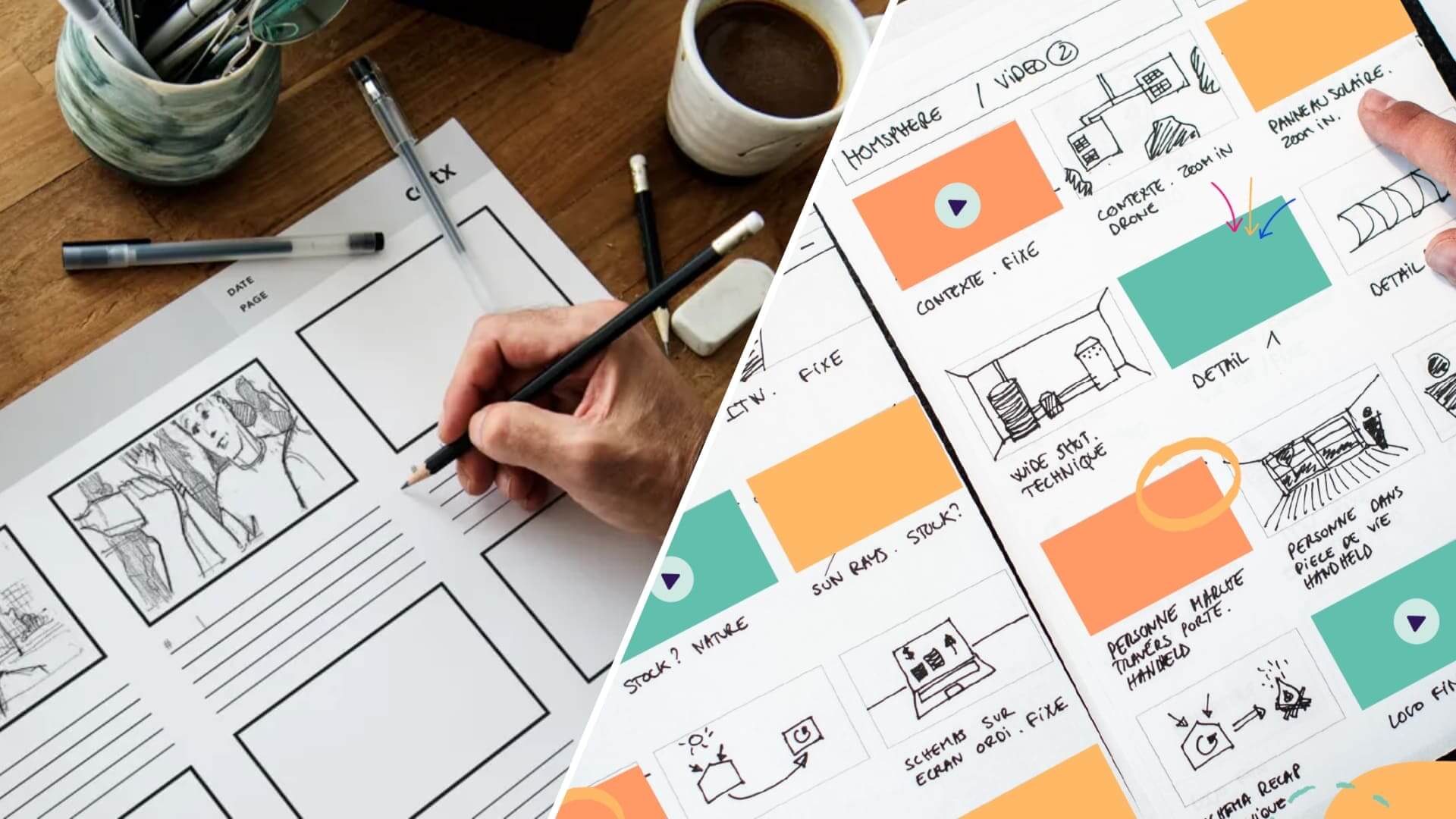How can you storyboard if you cannot draw? It might seem like a conundrum at first glance but, luckily, there are a number of alternatives to drawing that you can make use of and still produce high quality storyboards. In this post, we will cover why storyboards are important, as well as four different options for creating storyboards even if you have no artistic talent whatsoever.
How to Storyboard if You Can't Draw
The importance of storyboards
Storyboarding has been an important part of the filmmaking process for the past 90 years or so. Storyboards were first used in animation when a Walt Disney artist, Webb Smith, made use of them for the short film The Three Little Pigs back in the 1930s.
Before long, storyboards were a mainstay in both animated and live-action filmmaking. For an introduction into the basics of storyboarding, refer to the video below.
An introduction to storyboards • DIY Storyboard
Not all successful directors make use of storyboards but many of them do. Martin Scorsese, Steven Spielberg, and Ridley Scott all use storyboards to plan out their shots in pre-production. Be sure to check out our rundowns of the best Martin Scorsese movies and the best Steven Spielberg movies.

Jaws and Blade Runner storyboards • Easy storyboarding ideas
Getting a strong set of storyboards made up in pre-production lays out the target to shoot for when on set and a roadmap for what the finished film could look like. Be sure to check out our other post with tons of storyboard examples for further inspiration.
Storyboards can make communication between the director and cinematographer and other crew members easier and more efficient. But how can you make storyboards if you can’t draw?
How to Create a Simple Storyboard
Option 1: Use Stick Figures
Storyboards do not need to be intimidating to the artistically challenged. The purpose of a storyboard is not to look visually appealing, it is to communicate your intention and vision as a filmmaker.
In many cases, rough sketches with stick figures and arrows will be enough to get the job done and convey the necessary information.
Stick figures will get the job done • Subscribe on YouTube
If stick figures are just not cutting it for you, then move on to one of the following options.
Related Posts
DIY Storyboard
Option 2: Work With a Storyboard Artist
If you can’t draw, find someone else who can! Some directors draw their own storyboards but many hire professional artists. Any graphic illustrator will be able to generate great storyboards for you.
But there are also artists who specialize in storyboards who may be best suited to your particular artistic endeavors.
The Coen Brothers have a storyboard artist who they frequently collaborate with. His name is J. Todd Anderson, and the following video documents storyboard to film comparison.
How J. Todd Anderson makes storyboards • how to storyboard
If you can afford it, consider hiring a professional artist. There are websites that can help you hire a professional storyboard artist. If you have no budget, you may be able to collaborate with an artistic friend. When using someone else to draw your storyboards, it becomes even more important to be able to put your vision into words.
If you cannot clearly communicate what you want your shots to look like, then the storyboard artist will have to fill in the gaps, and their drawings might not line up with exactly what you picture in your mind.
Related Posts
Learn to Draw Storyboards
Option 3: Take Still Photographs
If you can’t draw your storyboards, you could try photographing them. Frame up how you want each shot to look, position your actors or stand-ins, then start snapping pictures.
Once you have your photos, be sure to label them with all of the applicable information such as shot descriptions, aspect ratios, indicators for motion, or sequence numbers.
Using StudioBinder’s storyboarding software can make this process much easier and more intuitive.
A guided tour of StudioBinder’s storyboarding software • Subscribe on YouTube
StudioBinder’s storyboarding software works well with both photographic storyboards and illustrated storyboards. It’s free to get started. Check out our step-by-step storyboarding guide for tips on using the software.
How to Storyboard if You Can't Draw
Option 4: Shoot Video Storyboards
The next step up from taking photographic storyboards is to shoot video storyboards. This can be a more intensive process than drawn or photographed storyboards but will still be far less time-consuming and difficult than the actual film shoot.
Video storyboards can be shot with stand-ins instead of the actual actors. They can be shot without props, lighting, costumes, or SPFX. They can be recorded anywhere rather than on-location or on a soundstage.
In the following video, Robert Rodriguez discusses storyboarding and why he prefers video storyboards.
Robert Rodriguez 10 Minute Film School sequel • Learn to draw storyboards
The minimum requirement for a storyboard is to give a rough idea of what the final shot should look like. The method for getting there is negligible if the end result effectively communicates the necessary information.
Related Posts
Up Next
Storyboard Examples + Free Template
Those are four solid options for generating storyboards if you can’t draw. Now that you know how to storyboard without drawing, it’s the perfect time to seek out inspiration. Up next, take a trip through dozens of examples of top-notch storyboards and learn how to get started in StudioBinder’s storyboarding software with our free templates.
Up Next: Storyboard Examples →
Share your vision with elegant shot lists and storyboards.
Create robust and customizable shot lists. Upload images to make storyboards and slideshows.
